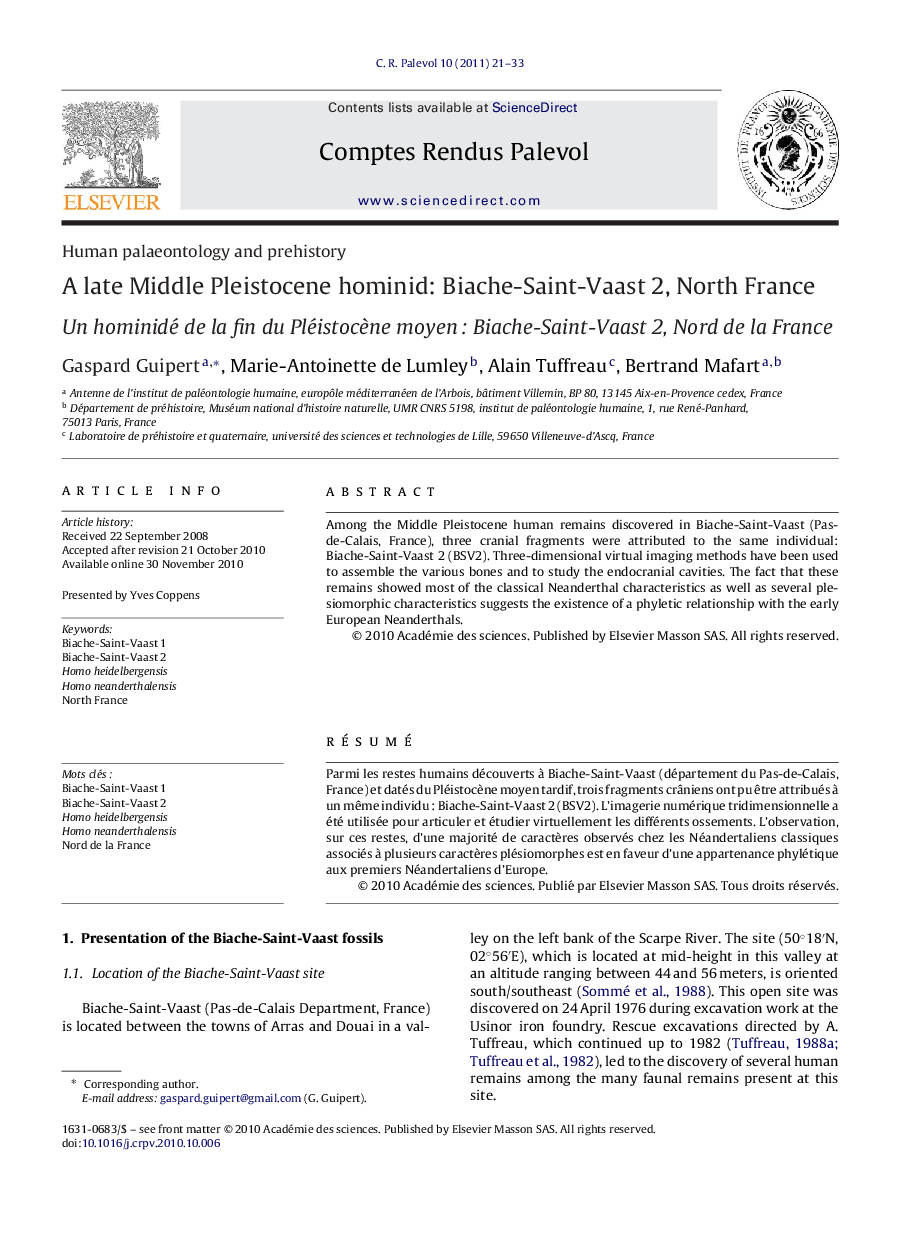| Article ID | Journal | Published Year | Pages | File Type |
|---|---|---|---|---|
| 4746013 | Comptes Rendus Palevol | 2011 | 13 Pages |
Among the Middle Pleistocene human remains discovered in Biache-Saint-Vaast (Pas-de-Calais, France), three cranial fragments were attributed to the same individual: Biache-Saint-Vaast 2 (BSV2). Three-dimensional virtual imaging methods have been used to assemble the various bones and to study the endocranial cavities. The fact that these remains showed most of the classical Neanderthal characteristics as well as several plesiomorphic characteristics suggests the existence of a phyletic relationship with the early European Neanderthals.
RésuméParmi les restes humains découverts à Biache-Saint-Vaast (département du Pas-de-Calais, France) et datés du Pléistocène moyen tardif, trois fragments crâniens ont pu être attribués à un même individu : Biache-Saint-Vaast 2 (BSV2). L’imagerie numérique tridimensionnelle a été utilisée pour articuler et étudier virtuellement les différents ossements. L’observation, sur ces restes, d’une majorité de caractères observés chez les Néandertaliens classiques associés à plusieurs caractères plésiomorphes est en faveur d’une appartenance phylétique aux premiers Néandertaliens d’Europe.
